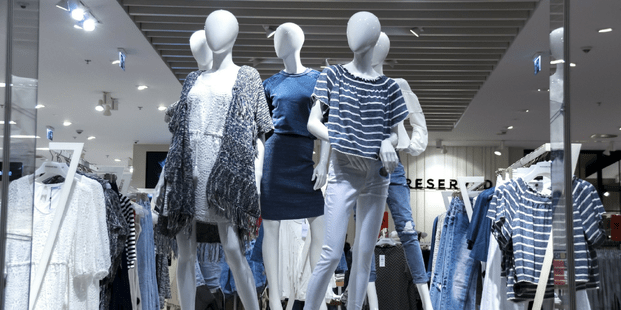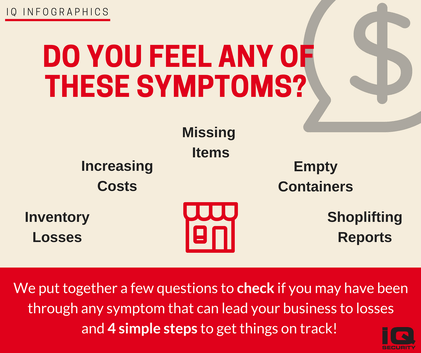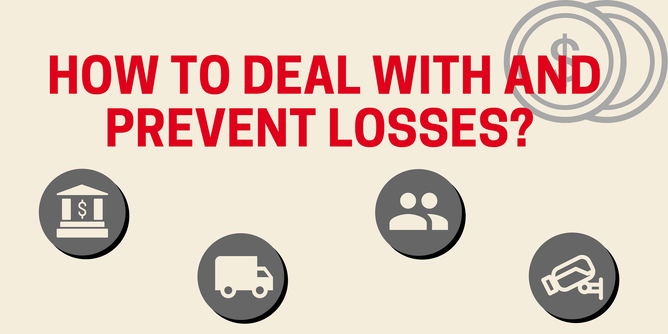What is Loss Prevention? Why does a retailer need to understand loss prevention? How do losses occur? How do I know if I may have a loss prevention problem? How to deal with?
Concept and How to Detect
The following information is provided to educate those unfamiliar with the concept of Loss Prevention across the retail industry (which include all sizes of shops too). The information below is by no means all-inclusive and is provided solely as an introduction to loss prevention and some possible solutions to the problem.
(The term retail can be applied to any industry or segment, including food service or food retail)
WHAT IS LOSS PREVENTION?
Loss Prevention is the concept of establishing policies, procedures and business practices to prevent the loss of inventory or monies in a retail environment.
Developing a program around this concept will help you to reduce the opportunities that these losses can occur and more specifically, work to prevent the loss rather than solely be reactive to them after they occur.
HOW DOES LOSSES OCCUR?
Most losses occur in three categories; internal theft, external theft and through errors. Here are some brief descriptions of each category:
1. INTERNAL THEFT
Internal Theft (Employee) is the largest contributor to loss for most retailers, regardless of size or segment. Although some may wonder why employee theft would be the largest category of loss, hands down, every survey, study and comparison across segments has shown time and time again that those who steal from a business the most are employees.
Employee theft occurs through many different methods:
- From simple merchandise theft to collusion with friends or other store employees, inventory losses by employees can easily deplete your profits (and the merchandise available for sale to customers).
- The point of sale (register) brings with it many other forms of employee theft. Simply removing money from the till to elaborate "conversion frauds" that include refund, void or discount thefts, point of sale theft can often cause a "double-dip effect" where you lose money and inventory simultaneously through a single incident.
2. EXTERNAL THEFT
External Theft is often caused by shoplifting, break-ins, robberies or other acts by outside sources. Although it does not cause as much loss overall compared to internal theft, shoplifting and external theft most certain causes a substantial amount of loss annually to the retail industry.
Controlling external theft requires a commitment to educating your employees on good customer service, awareness to the signs of a potential loss and how to best protect the store and inventory against external loss.
This requires the establishment of procedures and training in areas such as; shoplifting prevention, robbery awareness, safety and how to handle various situations dealing with people. What security measurements you have in place within your retail location can also greatly assist you in your efforts against external loss (although not always).
3. ERRORS
The last major area of caused loss in the retail environment is through Errors. Often considered paperwork errors, these mistakes can contribute upwards of over 15%-20% of a retailer's annual loss. Ironically, most of the errors seen in retail are employee-caused, thereby making a retailer's employee perhaps the highest contributor to the business loss every year!
Errors can occur anywhere - from checking in shipments, to ringing on the register to transferring merchandise. These errors can include the inaccurate counting of merchandise to the improper discounting or accounting of a sale or tender. Simple mistakes caused over and over again have resulted in thousands of dollars lost to a single retail establishment.
HOW DO I KNOW IF I MAY HAVE A LOSS PREVENTION PROBLEM?
Losses can be caused by many different reasons and through a variety of methods. The way to find out if you may have a problem is to look for possible symptoms that the business is not being profitable.
Here are some questions you can ask to see if you may have a loss prevention problem:
- Your cost of goods or food costs are increasing but your sales are staying the same or decreasing
- You notice empty containers, hangers or missing items throughout your store
- Employees are reporting shoplifting issues or concerns
- You have been the victim of a robbery over the past year (robbers often look for easy targets)
- You are losing inventory but no one mentions any shoplifting or theft events (possible employee theft)
- One employee reports shoplifting events but nobody else is witness to these events
- Sales are down consistently when a certain employee works
- Your cash drawer never balances and has small overages and shortages
- A certain employee has a high number of refunds, voids or no-sales and not the only employee authorized to handle these transactions
- Friends hanging around of asking for a certain employee
WHY DOES A RETAILER NEED TO UNDERSTAND LOSS PREVENTION?
When a retailer experiences a loss, they are losing direct, to the bottom line profitability.
Lost inventory requires replenishment at a cost to the retailer and lost monies cannot be replaced. The cost of these losses goes directly to the bottom line of a retail balance sheet causing lost profits. Profits that could have been used for new inventory, new store openings, employee benefits, increased earnings or improved EBIDTA.
WHY DO YOU NEED A LOSS PREVENTION FUNCTION?
Like any other part of your business a loss prevention function or established program helps make the business better. You have business functions around sales, marketing, human resources and more - why wouldn't you have a business function around the protection of inventory and the prevention of losing it?
The size of your loss prevention function, department or program depends on your business - the number of locations, what you are selling and the potential threats, risks and concerns facing your business.
Having an established function that includes program elements and resources to establish, implement and monitor loss will make your business more profitable and less susceptible to certain losses.
HOW TO DEAL WITH IT?
The solutions involve a series of measures that can be easily implemented in your business and may involve some equipment for controlling access to some places (and sometimes maybe to only a few people), alarm, installing CCTV cameras and/or smart retail software, monitoring, training and adopting some specific procedures.
A Security Expert can design and suggest a smart plan to deal and prevent losses and also fit into your budget.
If you detected any of these symptoms and want to find possible solutions to them or if you would like to prevent any loss, check now the Business Solutions for Shops and Retailers.
If you prefer, Contact our Expert Team and ask for more detailed information and specific recommendations for your business.










